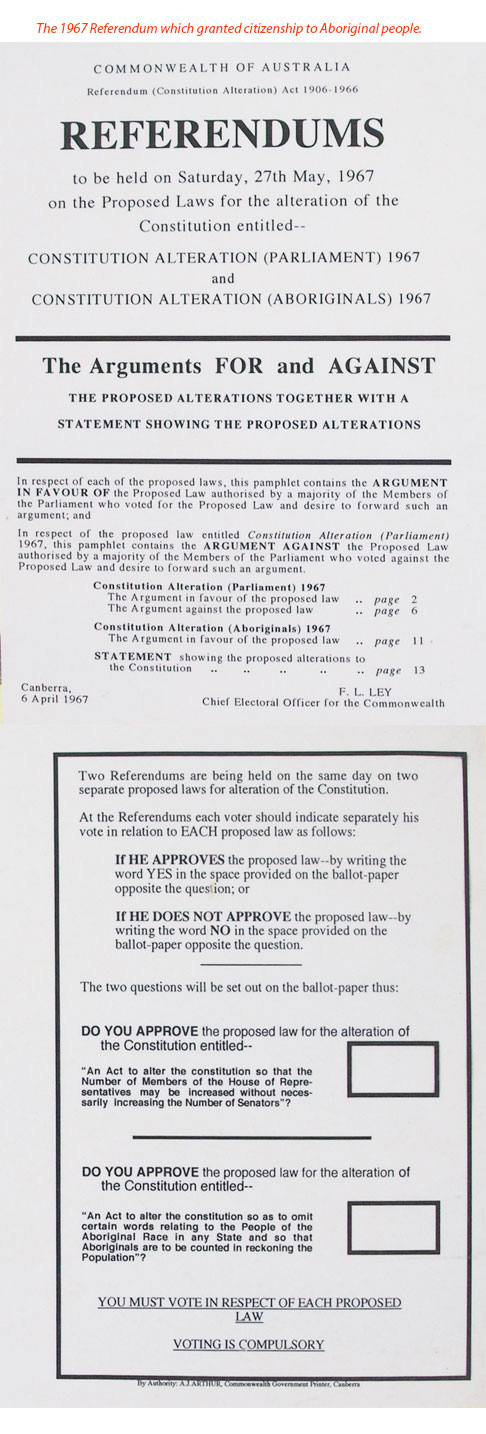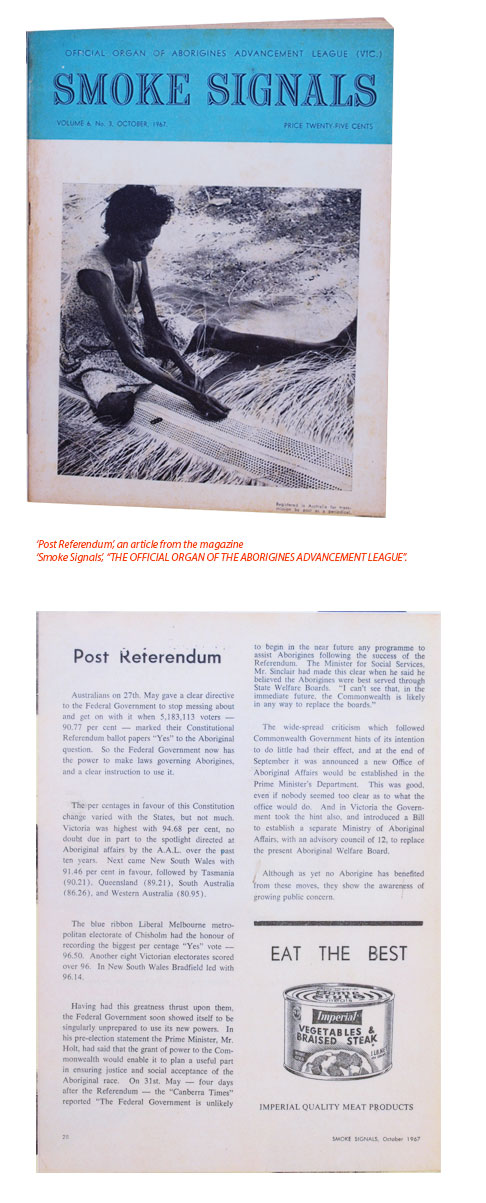Panel 7 – Advancement and Referendum
Advancement
The Aboriginal political activists of the 1930s were part of the formation of many Aboriginal Advancement Movements. Movements such as The Aborigines Progressive Association, The Australian Aborigines Uplift Society and The Australian Aborigines League.
These documents show some of the changes that were happening for Aboriginal people on a social and political level around the state.
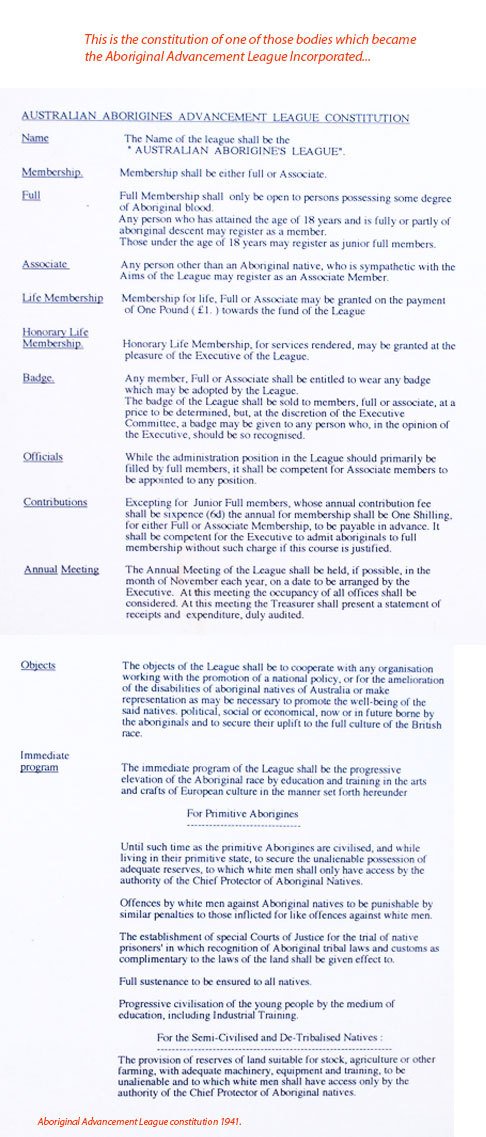
A lot of people from the western region were involved with the Aboriginal Movement around Victoria. Sometime during the 60’s the focus of Aboriginal activism moved into the Fitzroy, Carlton and Richmond areas.
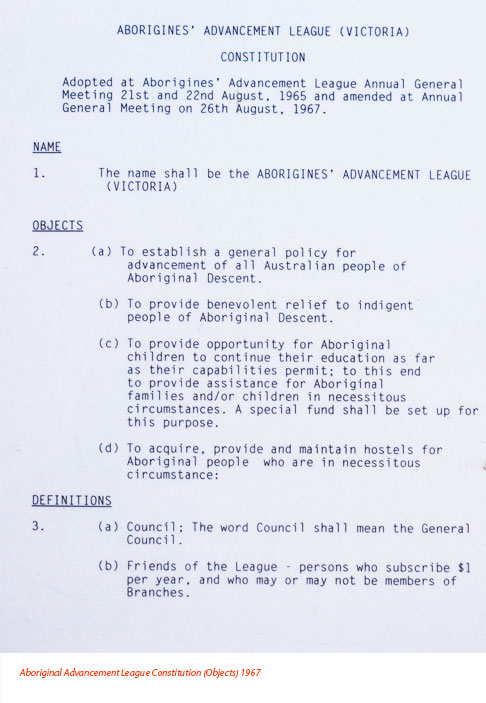
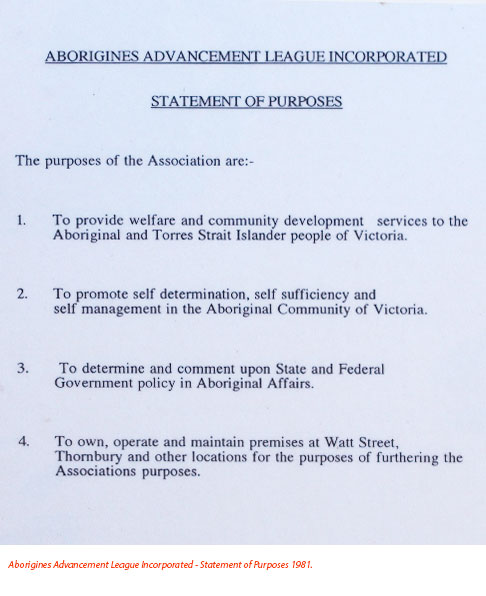
“The government defines an Aboriginal community by their traditional tribal grounds, their having formed an organisation or by the missions and reserve grounds that they lived on.
Here, in the western suburbs, the local community was not registered as an organisation and cannot be defined by any one particular tribal or mission area. The authorities of the times, past and present, didn’t recognise the Aboriginal and Torres Strait Islander communities of the western suburbs as being a community in government acts and constitutions.”
“It’s sometimes difficult to define an Aboriginal community just as it’s sometimes difficult to define an Aboriginal person. For example, It is often hard for a non Aboriginal to accept a blond haired blue eyed person as an Aborigine. But let’s apply the criteria that is used to define an Aboriginal person and use that as a guide to understand what an Aboriginal community is.
To be recognised as an Aboriginal person one must identify as an Aboriginal, whether blond or dark and also be recognised by other Aboriginal people as an Aboriginal person.
The Same could be said for a community. Except a member of a community will identify themselves more with an area. For example, I live and am part of the western suburbs and I identify with other Aboriginal people who live in my area. If other Aboriginal people and/or groupings identify you as a people/grouping then you are an Aboriginal community.
Furthermore as an Aboriginal person you will also be associated with the area you come from through either family and/or tribal clan belonging. For example, I am a Yorta-Yorta person of Taung-whurrung decendency. Therefore I am associated with two communities, Yorta-Yorta (territory in Northern Victoria) and the western suburbs where I live.”
“Here in the west we were involved with the Aboriginal organisations and their communities, as a community, whilst not being recognised by the state and federal authorities as an Aboriginal community.”
Referendum
In a referendum in 1967 over 90% of the people of Australia voted for the Aboriginal people to have citizenship. It took until 1971 to change all the state’s and federal government’s legislation, to put into practice the full reality of this citizenship.
While Aboriginal people were supposedly citizens from 1967 children were still being taken away until 1971 when all the changes had been made to all the legislation relating to Aboriginal issues.
‘A spokeswoman for Aboriginal Affairs Minister Mr. Gerry Hand, Ms Sharon O’Neil said the practice of taking Aboriginal children from their parents and putting them in foster homes or with adoptive parents was officially abolished in the late 1960s. She added that the practice was abolished nationwide in the late ’60s and in the early 1970s in Victoria.’
Essendon Gazette Wednesday,
March 7, 1990.
